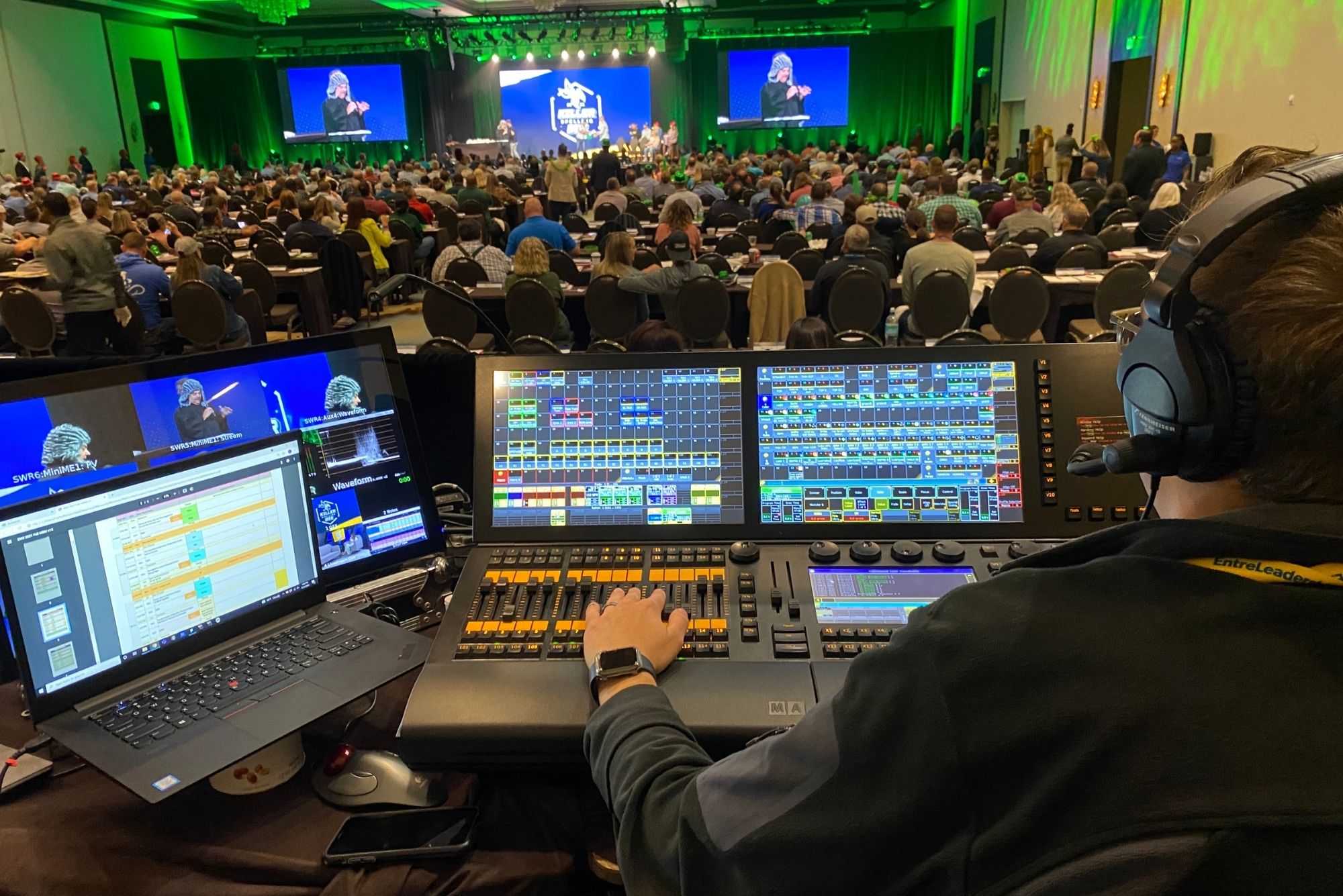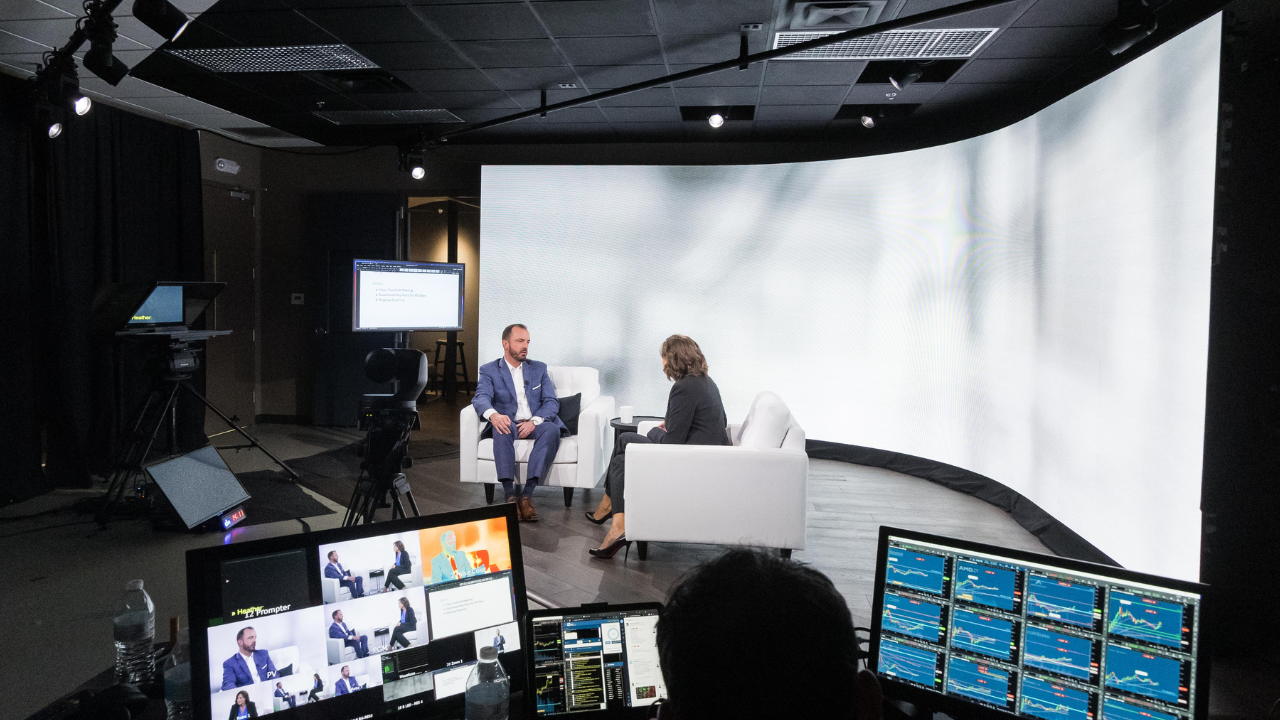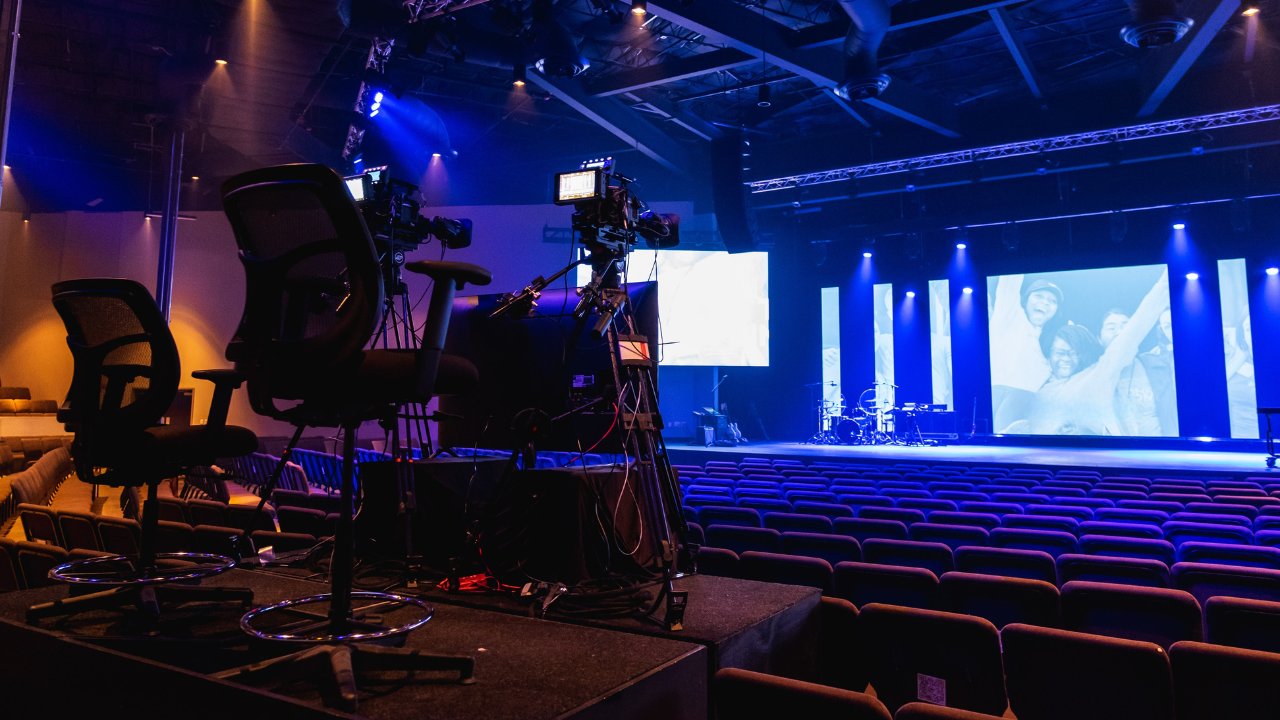5 Keys to a Successful Hybrid Event Production
Published on: Tuesday, March 8, 2022 - 8:00am

Recently, a new type of event is getting a lot of buzz — the hybrid event.
The trouble is that the term “hybrid event” isn’t well defined yet. Many people don’t really know what makes a hybrid event and how to carry one out successfully.
In this post, we’ll look at what a hybrid event is, what it is not, and five keys to ensuring your hybrid event production is as successful as any live event production in the past.
More Than a Broadcast
Before discussing hybrid event production, and as a live event production company that’s seen all types of events, we’d like to provide a definition for hybrid events that will help us all work from the same page.
A hybrid event combines an in-person event with a digital format event to meet the needs of two different audiences, providing a shared, yet separate, experience.
In other words, a hybrid event is two events rolled into one.
We all know what a live event is; it speaks directly to the people in the room and engages all the senses. It’s designed around people showing up physically, in person.
We’re also all probably familiar with broadcasting live events to remote viewers, which has been a blessing for many who can’t join in-person events. But this is where some of the confusion about what a hybrid event is comes in.
To be clear, a hybrid event does not mean a live event that’s streamed online.
A broadcast like this is really just an extension of the live event. The people in the room are still the focus. At home, viewers just see exactly what’s happening live, but without the immersive experience of actually being there.
Broadcasts don’t provide much, if any, specific engagement for the remote audience, whose experience is more akin to a fly on the wall than a participant in an event.
This is why we say that hybrid events are really two events in one — a live, in-person event and a digital event. Each event has its own audience and is specifically tailored to engage that audience. The message may be the same, but it reaches each audience through their preferred delivery channels in specialized packaging.
When an audience member shows up at the start of a hybrid event — whether in person or online — they think, “This event is just for me.”
Who Benefits From Hybrid Events?
We’ve seen hybrid events provide enormous benefit in a number of situations. Businesses and organizations use them for conferences, seminars, and motivational speakers, nonprofits use them for fundraisers, and church groups use them for greater outreach for their community.
When done well, hybrid events can extend the reach, heighten the impact, or increase the profit or fundraising of the host organization (depending on the goal).
For example, droves of people may be interested in a certain live event, but can’t make the trip or afford the steep entry fee. However, they may be very willing to pay a lower fee to participate in the event from home — if they know the experience will be worthwhile.
If guests can only expect the fly-on-the-wall treatment, then the distractions of home and people’s inevitably wandering attention will render events ineffective. Not only will your message fail to connect with the audience, but the audience also won’t be interested next time.
So how do you create a hybrid event that holds people’s attention and provides an immersive, engaging experience no matter where they’re watching from?
5 Keys to a Successful Hybrid Event
Because hybrid events are two separate events in one, the digital side must receive the same amount of attention as the live side. The specifics may look different, but allocating the adequate budget, planning, resources, and time are essential.
Here we look at five major factors to prioritize on the digital side in order to have a successful hybrid event.
Allow Adequate Time
It’s easy to believe that you’ll be able to pull off your digital event in a tighter timeline than your live event. Broadcasts may have led to this idea, because they generally follow the plan that’s in place for the live event.
But this doesn’t work with true hybrid events.
The digital side of a hybrid event is its own event. So in a hybrid event, you have both live event production and digital event production.
You wouldn’t start planning your live event a week out, and you can’t start planning your digital event that late either. The digital side needs just as much attention as the live.
Some of the risks of insufficient digital event planning include technical difficulties, dead air, and inadequate audience engagement. You can lose remote participants’ attention in the blink of an eye (or the glitch of a platform), and it’s extremely difficult to gain again.
To plan hybrid event production adequately, it’s best to start talking about your digital event production in the same timeline as your live event production. As you’re planning in-room features and talking to providers, you can also be meeting with your virtual team and working out digital logistics.
Pick Your Platform Early
Choosing a digital platform is an incredibly important decision, and one you don’t want to delay.
Think of your digital platform like you think of the physical building where your live-event participants will arrive. You want both options — the digital and the physical — to create a welcoming atmosphere, reflect your brand well, and stand strong so everyone can hear what they came to hear.
Whether you choose Facebook Live, YouTube, or a more versatile platform like Joinin (the platform we love here at CTS), you’ll want to embed it on your site to give remote participants the cleanest and most on-brand experience possible. But if you wait until the last minute, not only do you risk technical difficulties by using an unfamiliar and untested platform, you’ll also pay a premium in last-minute programming costs.
When you choose your hybrid event production platform early in the planning process, you have adequate time to test it, embed it, and get it ready for show time.
Meet Content Delivery Deadlines
Content delivery deadlines don’t get more flexible just because an event is virtual. In fact, digital events require just as strict — and early — deadlines as you would expect in live event production.
For example, if you’re going from a “live, in-person” segment to a video or commercial for the virtual audience only, the content can’t come in day-of. Then you risk distracting glitches and embarrassing content flubs.
All content needs to be watched, tested, uploaded, and tested again before you can have any assurance that it will play back properly and at the appropriate times for your digital audience.
Assign a Dedicated Team
Only a dedicated team can give the digital side of your hybrid event the attention and resources it needs to be successful.
It’s already a full-time job to run a live, in-person event. The personnel who take care of the live side of your hybrid event will not have the bandwidth to cover the digital side as well. And the digital side will suffer if they have to try.
So in general, your digital event will require its own producer, script writer, sound engineer, director, and any other role that would be critical in live event production. This team will focus on making sure the digital side of your hybrid event is as spectacular as the in-person side.
This may sound expensive — and it is. But it’s just as necessary as what you spend on live event production. And by spending the money to produce an engaging, successful hybrid event, you’ll have no problem generating more than enough revenue to recoup those costs.
Know Your Audiences
It’s important to remember that in a hybrid event you have two audiences. If you cater all your content only to your in-person audience, then your chance of captivating the digital audience is slim.
In order to deliver the most engaging, immersive experience possible, you have to know your virtual audience.
Who are they? Why did they stay at home? Are they single parents who couldn’t get away? Was the price point too high? Did they just prefer not to travel?
All of these questions can inform your approach to the digital audience.
Also consider what will hold the virtual audience’s attention in the midst of the distractions of home. What live content don’t they need to see? What value can you provide that’s specific to the digital event?
By getting to know your audiences, you’ll be able to meet both live and virtual needs simultaneously.
Hybrid Events Are on the Rise
Most of the principles for running a successful hybrid event are the same as running a successful live event — but doubled. The most important thing is to remember that a hybrid event is really two distinct events rolled into one.
When allotted the time, attention, and resources they need, hybrid events may even achieve a popularity that outperforms that of live-only events in the near future.



